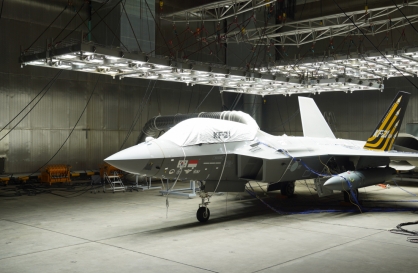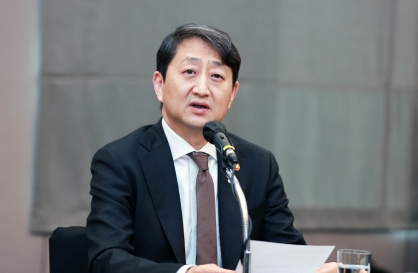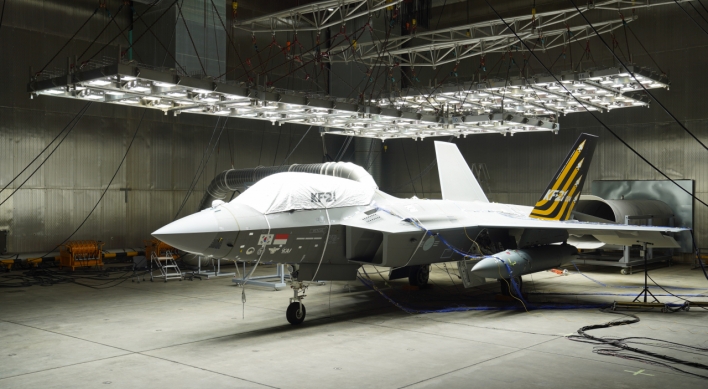Although expressed in very cautious words, the U.S.’ apparent approval of the possibility of Japan’s more active military involvement in the region under the name of “collective self-defense” has become a topic of much discussion in the neighboring countries.
 The geopolitical implications of this development will certainly be significant in many respects. It is somewhat odd, though, to see this matter being discussed under the theme of “collective self-defense” as the situation envisioned in the pronounced plan does not seem to square with how the concept has been understood and applied in international law.
The geopolitical implications of this development will certainly be significant in many respects. It is somewhat odd, though, to see this matter being discussed under the theme of “collective self-defense” as the situation envisioned in the pronounced plan does not seem to square with how the concept has been understood and applied in international law.
This concept of collective self-defense does not mean that one country can support its allies in terms of all sorts of military activities or conflicts.
Unlike the companion “individual self-defense,” this concept basically requires and presupposes existence of an alliance treaty between or among states, although there are some rare exceptions. Once an alliance treaty is in place, the exercise of the rights is then regulated by the terms and conditions set forth in the treaty.
Enter Japan here. In its case, the alliance treaty at issue is the 1960 U.S.-Japan Security Treaty. So, the discussion of collective self-defense in the context of the United States and Japan, to the extent Japan is concerned, is determined by the provisions of the U.S.-Japan Security Treaty. Now, according to Article 5 of the treaty, the treaty has a very specific territorial limitation for its application. The article confines the scope of the application of the treaty to a situation of an armed attack occurring “in the territories under the administration of Japan.”
In other words, for the treaty to be applicable for the purpose of collective self-defense, the attack should be one against the United States within Japan’s territory. The way it is written down, therefore, the treaty apparently does not cover a situation in which U.S. territory is being attacked or U.S. warships are being attacked in high seas, or, for that matter, U.S. armed forces in South Korea are being attacked.
So, it appears that, barring an amendment to the 1960 treaty, many emergency situations that are being discussed in the context of the present collective self-defense debates in fact do not fall under the provisions of the treaty.
Perhaps what is being discussed here is not so much related to the strict concept of collective self-defense as to a policy change to invite and permit Japan to pursue more active roles in terms of military activities in this region.
As many watchers put it, it may be the case that the United States wishes to share with Japan the increasing military burden in this part of the world, despite the concern raised by some neighboring countries whose memory is just too recent.
As stipulated in Article 51 of the U.N. Charter, any state possesses an inherent right of self-defense, whether individual or collective. So does Japan. There is no question about it.
The concept, however, should be interpreted and applied in a manner consistent with the established legal principles in order to allay the anxiety of the neighboring countries and to achieve the intended objectives of the scheme. If the concept is used in a way that does not exactly dovetail with the strict definition of the term itself, other countries in the region will have another reason to justify their concern.
By Lee Jae-min
Lee Jae-min is a professor of law at the School of Law at Hanyang University. Formerly he practiced law as an associate attorney with Willkie Farr & Gallagher LLP. ― Ed.
 The geopolitical implications of this development will certainly be significant in many respects. It is somewhat odd, though, to see this matter being discussed under the theme of “collective self-defense” as the situation envisioned in the pronounced plan does not seem to square with how the concept has been understood and applied in international law.
The geopolitical implications of this development will certainly be significant in many respects. It is somewhat odd, though, to see this matter being discussed under the theme of “collective self-defense” as the situation envisioned in the pronounced plan does not seem to square with how the concept has been understood and applied in international law. This concept of collective self-defense does not mean that one country can support its allies in terms of all sorts of military activities or conflicts.
Unlike the companion “individual self-defense,” this concept basically requires and presupposes existence of an alliance treaty between or among states, although there are some rare exceptions. Once an alliance treaty is in place, the exercise of the rights is then regulated by the terms and conditions set forth in the treaty.
Enter Japan here. In its case, the alliance treaty at issue is the 1960 U.S.-Japan Security Treaty. So, the discussion of collective self-defense in the context of the United States and Japan, to the extent Japan is concerned, is determined by the provisions of the U.S.-Japan Security Treaty. Now, according to Article 5 of the treaty, the treaty has a very specific territorial limitation for its application. The article confines the scope of the application of the treaty to a situation of an armed attack occurring “in the territories under the administration of Japan.”
In other words, for the treaty to be applicable for the purpose of collective self-defense, the attack should be one against the United States within Japan’s territory. The way it is written down, therefore, the treaty apparently does not cover a situation in which U.S. territory is being attacked or U.S. warships are being attacked in high seas, or, for that matter, U.S. armed forces in South Korea are being attacked.
So, it appears that, barring an amendment to the 1960 treaty, many emergency situations that are being discussed in the context of the present collective self-defense debates in fact do not fall under the provisions of the treaty.
Perhaps what is being discussed here is not so much related to the strict concept of collective self-defense as to a policy change to invite and permit Japan to pursue more active roles in terms of military activities in this region.
As many watchers put it, it may be the case that the United States wishes to share with Japan the increasing military burden in this part of the world, despite the concern raised by some neighboring countries whose memory is just too recent.
As stipulated in Article 51 of the U.N. Charter, any state possesses an inherent right of self-defense, whether individual or collective. So does Japan. There is no question about it.
The concept, however, should be interpreted and applied in a manner consistent with the established legal principles in order to allay the anxiety of the neighboring countries and to achieve the intended objectives of the scheme. If the concept is used in a way that does not exactly dovetail with the strict definition of the term itself, other countries in the region will have another reason to justify their concern.
By Lee Jae-min
Lee Jae-min is a professor of law at the School of Law at Hanyang University. Formerly he practiced law as an associate attorney with Willkie Farr & Gallagher LLP. ― Ed.






![[KH Explains] Can tech firms' AI alliances take on Nvidia?](http://res.heraldm.com/phpwas/restmb_idxmake.php?idx=644&simg=/content/image/2024/05/07/20240507050619_0.jpg&u=)


![[Grace Kao, Meera Choi] Has money displaced romance on dates?](http://res.heraldm.com/phpwas/restmb_idxmake.php?idx=644&simg=/content/image/2024/05/06/20240506050233_0.jpg&u=)







![[K-pop’s dilemma] Time, profit pressures work against originality](http://res.heraldm.com/phpwas/restmb_idxmake.php?idx=652&simg=/content/image/2024/05/08/20240508050705_0.jpg&u=20240508171126)
![[Today’s K-pop] NCT Dream to drop pre-release from 2nd Japan single](http://res.heraldm.com/phpwas/restmb_idxmake.php?idx=642&simg=/content/image/2024/05/08/20240508050725_0.jpg&u=)